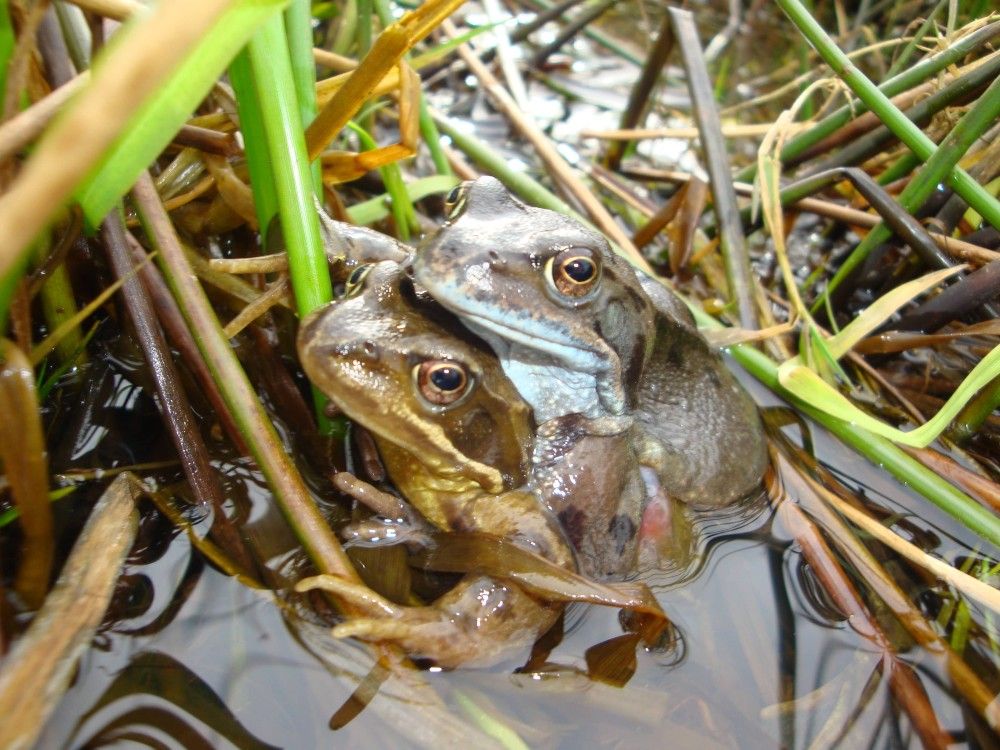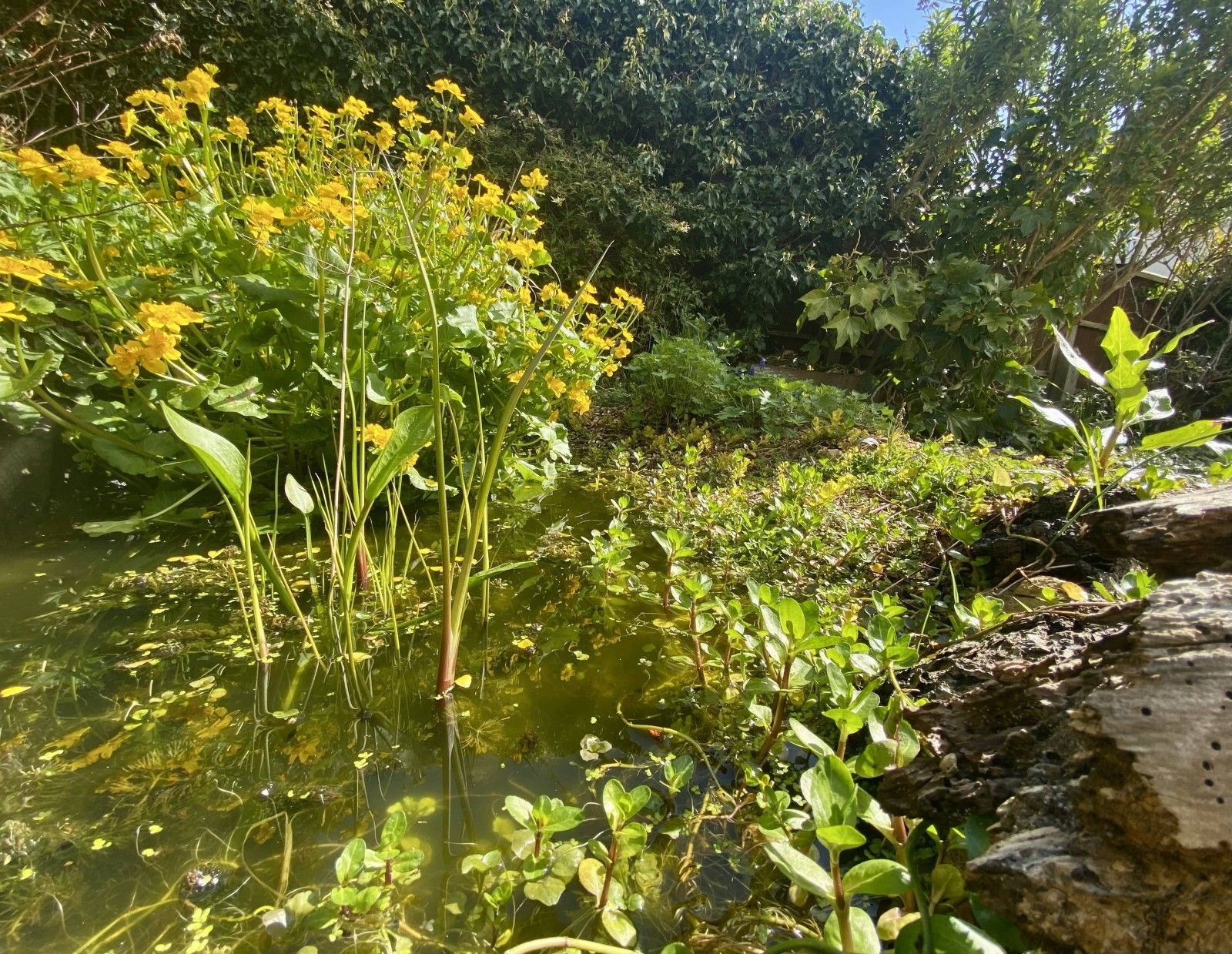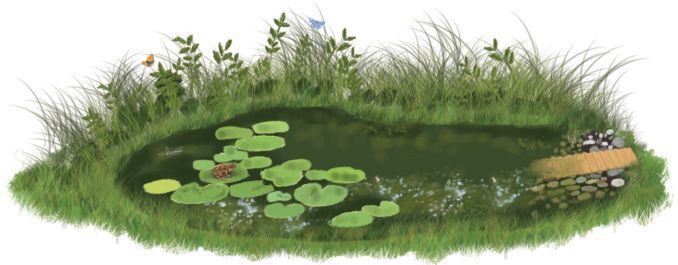How to make a wildlife pond

Don’t think you have enough space for a pond? Don’t worry. Large or small, any size pond will benefit wildlife. Your pond can be as simple as a buried water bucket, or be the ‘textbook’ perfect pond, either way, you’re still doing your bit for wildlife.
You’ll need:
- A patch of garden
- A strong spade to dig
- A wheel barrow
- A plank of wood and/or spirit level
- Builder’s sand, gravel and children’s play sand
- Something to line your pond with (e.g. rubber polymer or PVC pond liner, liner underclay or clay)
- A mixture of large rocks and pebbles
- Water (preferably rain water from a water butt)
- A few native aquatic plants

How to build your pond:
- Place your pond in a relatively sunny area of your garden, as frogs, tadpoles, insects and plants prefer warm conditions, particularily in spring. However, ponds which are shaded for part of the day are better as they will not get too hot or dry out very quickly during hot weather spells. Make sure you place your pond away from overhanging trees or large bushes as falling leaves of some species can be toxic and even non-toxic leaves can quickly accumulate in large quantity in the pond and become detrimental for aquatic species due to decomposition and deoxygenating the water. Once you have the right spot you can mark your pond out using rope or a hosepipe.
- Now you can start digging. Make sure to include lots of shallow sloping margins as you dig your shape and incorporate gentle slopes all the way around and varied depths so that wildlife can get in and out. Unless you aim to keep fish (which are not ideal in most wildlife garden ponds), there is no need to make the pond deeper than 25-40cm, but take into account that is the final depth, after adding the underlay, liner and cover the liner. Use a spirit level or a plank of wood to ensure the edges of the pond are level.
- Once you’ve dug your hole, remove any sharp rocks or roots from the bottom so they don’t puncture your pond liner. Then add a 5cm-thick layer of sand or subsoil to provide a protective barrier under your liner or you can use a pond liner underlay.
- Dig a small trench around your pond and place the liner in the hole, tucking the ends into the trench. Use large rocks to weigh the liner down and cut off any excess using scissors. Once fixed, the liner can be covered in a thin 1-2cm layer of washed gravel or children’s play sand. This will make the pond look more natural but also provide cover and support for plants. You can use subsoil but do not add topsoil into your pond as it will make the water very nutrient rich. Plant the area surrounding the pond with native vegetation to provide cover and shelter for any animals emerging from the pond but allow good visibility of the pond at least on one side so that you can enjoy it.
- Fill your pond with water (preferably rainwater). You can collect rainwater using a water butt and use this to fill and top up the pond when needed. Ponds can be filled with tap water but this should be avoided as in most parts of the country the water from the tap is rich in nutrients, increasing the chances of an algal bloom in your pond and it needs to be treated first, as it contains chemicals such as chloramines and chlorine (which are harmful to aquatic life).
- A wildlife pond should always aim to incorporate beaches and large shallow areas, meaning there is no need for a ramp, as wildlife can struggle to find them if they fall in the pond. However, if it is impossible to create large shallow areas (e.g. in a preformed rigid pond), you should add one or several ramps to offer extra help for animals like hedgehogs to get out of your pond safely. Piles of stones, some chicken wire or pieces of wood will do the trick as long as they are stable.
- You can simply wait and see what plants will naturally colonise the pond or you could introduce a few plants to your pond a week or two later. Make sure to choose local and native species that will benefit your local wildlife, including marginal plants like marsh marigold (Caltha palustris) or purple loosestrife (Lythrum salicaria) and oxygenator plants such as hornwort (Ceratophyllum demersum) and spiked water milfoil (Myriophyllum spicatum). Most importantly, be careful not to introduce invasive aquatic plant species such as floating pennywort (Hydrocotyle ranunculoides), parrot’s feather (Myriophyllum aquaticum), New Zealand pygmyweed (Crasulla helmsii), Azolla (Azolla filiculoides) and others. These plants quickly take over the pond, may be very hard to get rid of and can be spread by wildlife to other ponds, rivers and lakes causing significant harms.
Sit back and enjoy the pond, check and record what species start using it! Be patient and let wildlife find the pond and do not transport spawn from other ponds as this can easily introduce fragments of invasive plant species as well as amphibian diseases that have been spreading across the country, causing mass mortalities of frogs and tadpoles.
Show us your creation!
Take a photo of your wildlife pond and submit it below, or post on social media and inspire others to do the same!

